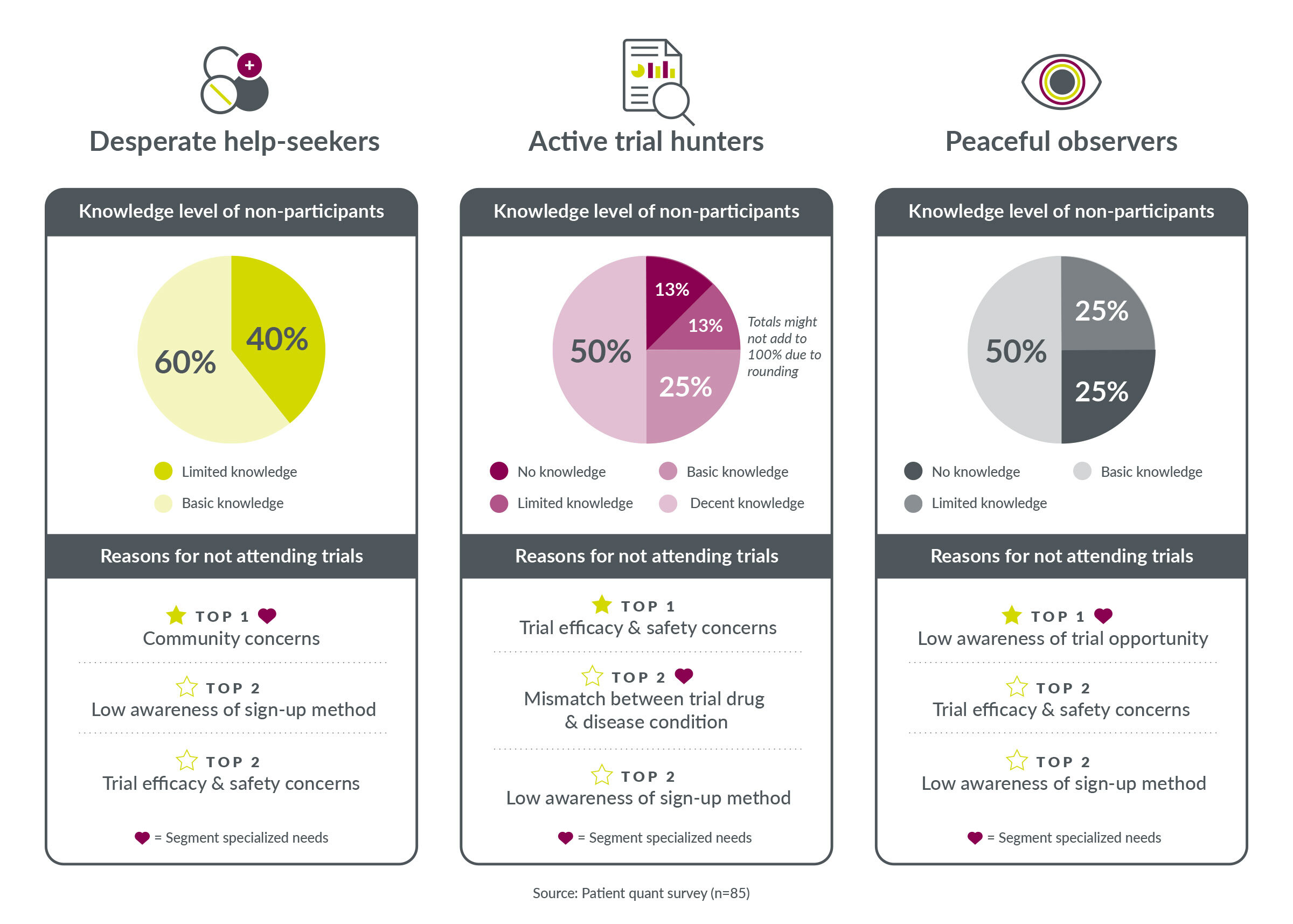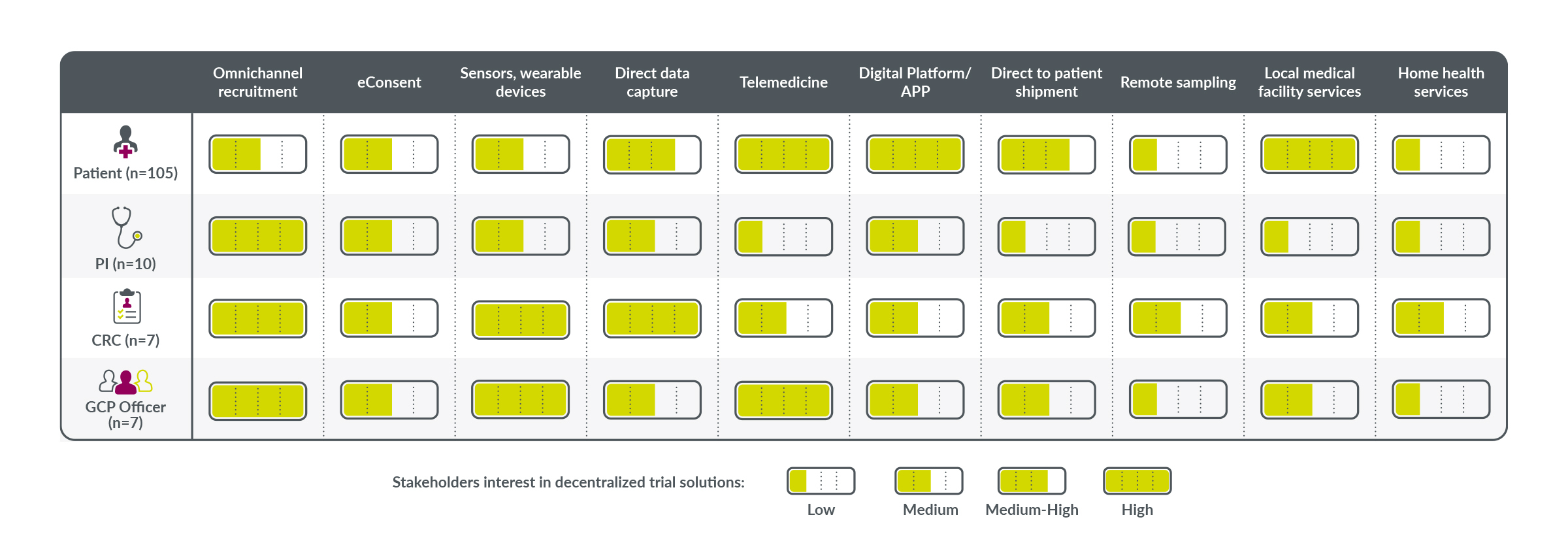The obstacles to participation vary by segment (Figure 1). Overall, the most significant is patients not being aware of the availability of clinical trials. Second, they may find it difficult to understand the process of signing up for a trial, especially if the sponsor does not provide clear guidance. Finally, patients may be concerned about the effectiveness and safety of a trial.
The most critical decision point for patients is enrollment. Patients can be positively influenced by affirmation and reassurance from a healthcare provider, principal investigator, or clinical research coordinator, emotional support from family or friends, and positive online feedback about the trial drug.
The case for decentralized trials
Ensuring that clinical trials are inclusive can be negatively affected by inadequate accessibility. Patients living in remote areas may have limited access to trial opportunities and, therefore, may not be considered in the first place. Those with disabilities may face exclusion or difficulties participating in and adhering to trial activities, while patients from minority ethnic groups may be naturally excluded from trials because of smaller population sizes or language barriers.
Sponsors can help overcome these barriers and increase participation by reducing patients’ need to travel to a medical center. Patients value the convenience of avoiding travel to trial sites, while site stakeholders see it as beneficial for patients who live far away but may help with retention. All stakeholders favor remote solutions for recruitment and remote data capture (Figure 2) where practical.
However, stakeholders have concerns that impede the adoption of DCTs. Patients and professionals express concerns about the lack of face-to-face communication, limited personal contact, and the risk of privacy breaches. Patients are wary of remote sampling and home health services, and professionals worry about regulatory compliance, communication, and privacy. Furthermore, the perceived lack of a formal regulatory framework governing DCT solutions is a roadblock for some hospitals.
Stakeholders have concerns that impede the adoption of DCTs. Patients and professionals express concerns about the lack of face-to-face communication, limited personal contact, and the risk of privacy breaches.


